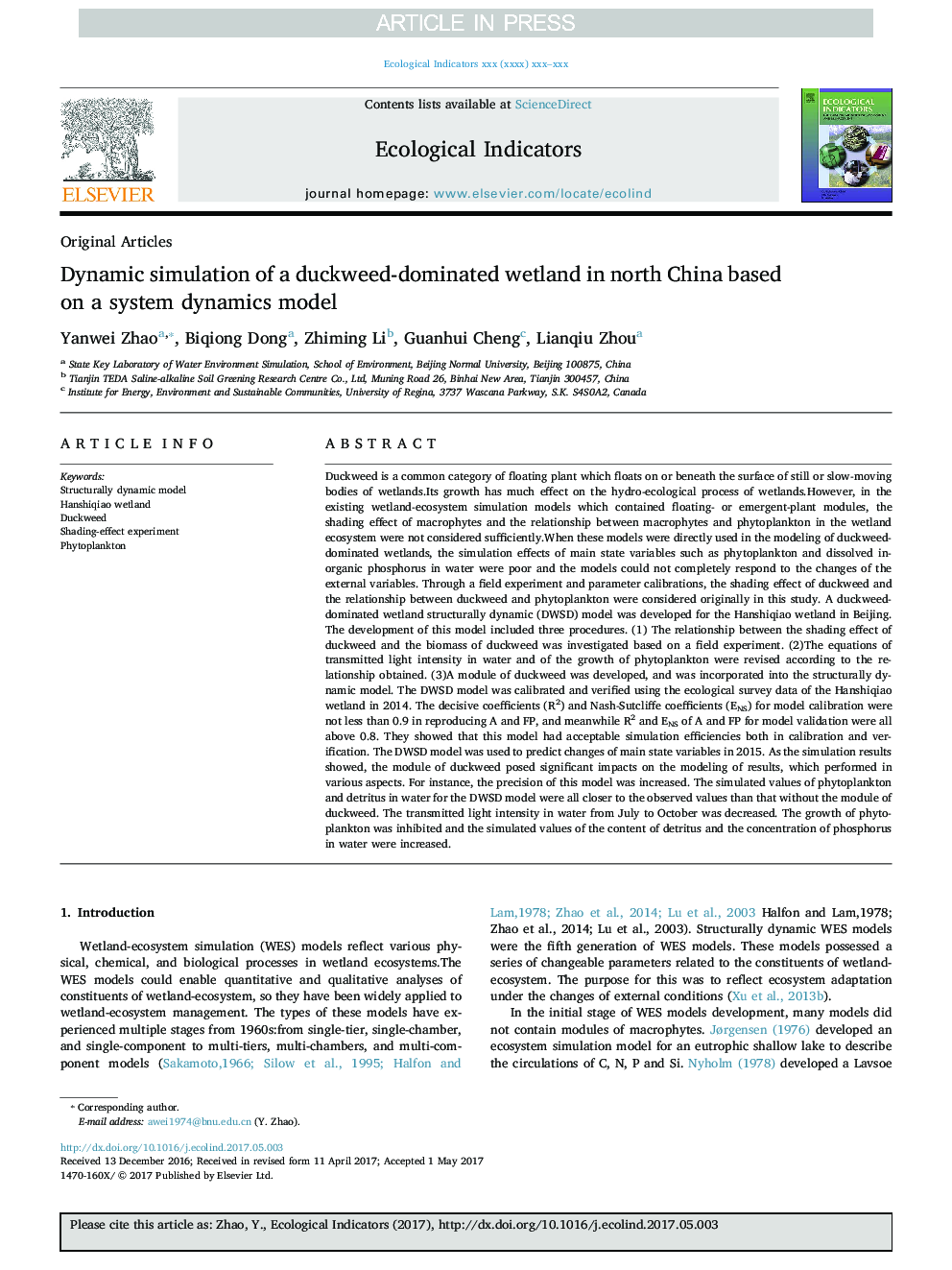| کد مقاله | کد نشریه | سال انتشار | مقاله انگلیسی | نسخه تمام متن |
|---|---|---|---|---|
| 8845264 | 1617110 | 2018 | 10 صفحه PDF | دانلود رایگان |
عنوان انگلیسی مقاله ISI
Dynamic simulation of a duckweed-dominated wetland in north China based on a system dynamics model
ترجمه فارسی عنوان
شبیه سازی داینامیک از تالاب تحت سلطه توده ای در شمال چین بر اساس یک مدل پویایی سیستم
دانلود مقاله + سفارش ترجمه
دانلود مقاله ISI انگلیسی
رایگان برای ایرانیان
موضوعات مرتبط
علوم زیستی و بیوفناوری
علوم کشاورزی و بیولوژیک
بوم شناسی، تکامل، رفتار و سامانه شناسی
چکیده انگلیسی
Duckweed is a common category of floating plant which floats on or beneath the surface of still or slow-moving bodies of wetlands.Its growth has much effect on the hydro-ecological process of wetlands.However, in the existing wetland-ecosystem simulation models which contained floating- or emergent-plant modules, the shading effect of macrophytes and the relationship between macrophytes and phytoplankton in the wetland ecosystem were not considered sufficiently.When these models were directly used in the modeling of duckweed-dominated wetlands, the simulation effects of main state variables such as phytoplankton and dissolved inorganic phosphorus in water were poor and the models could not completely respond to the changes of the external variables. Through a field experiment and parameter calibrations, the shading effect of duckweed and the relationship between duckweed and phytoplankton were considered originally in this study. A duckweed-dominated wetland structurally dynamic (DWSD) model was developed for the Hanshiqiao wetland in Beijing. The development of this model included three procedures. (1) The relationship between the shading effect of duckweed and the biomass of duckweed was investigated based on a field experiment. (2)The equations of transmitted light intensity in water and of the growth of phytoplankton were revised according to the relationship obtained. (3)A module of duckweed was developed, and was incorporated into the structurally dynamic model. The DWSD model was calibrated and verified using the ecological survey data of the Hanshiqiao wetland in 2014. The decisive coefficients (R2) and Nash-Sutcliffe coefficients (ENS) for model calibration were not less than 0.9 in reproducing A and FP, and meanwhile R2 and ENS of A and FP for model validation were all above 0.8. They showed that this model had acceptable simulation efficiencies both in calibration and verification. The DWSD model was used to predict changes of main state variables in 2015. As the simulation results showed, the module of duckweed posed significant impacts on the modeling of results, which performed in various aspects. For instance, the precision of this model was increased. The simulated values of phytoplankton and detritus in water for the DWSD model were all closer to the observed values than that without the module of duckweed. The transmitted light intensity in water from July to October was decreased. The growth of phytoplankton was inhibited and the simulated values of the content of detritus and the concentration of phosphorus in water were increased.
ناشر
Database: Elsevier - ScienceDirect (ساینس دایرکت)
Journal: Ecological Indicators - Volume 92, September 2018, Pages 268-277
Journal: Ecological Indicators - Volume 92, September 2018, Pages 268-277
نویسندگان
Yanwei Zhao, Biqiong Dong, Zhiming Li, Guanhui Cheng, Lianqiu Zhou,
